After a brutal mugging at the hands of five young men, Mark Hogancamp, a talented artist, suffers acute memory loss and trauma as he tries to piece together the remnants of his life through a fantasy he lives out in his backyard. In ‘Welcome to Marwen,’ director Robert Zemeckis tells an extraordinary tale of revival and the power of escapism to heal tragedies in one’s life. Mark builds a 1:6 model village called Marwen, where he lives out a fanciful life of action and heroism through dolls. Harnessing the power of imagination and his photography aspirations, Mark deals with the demons of his past and tries to resurface back into normalcy.
The poignant 2018 film explores how we cope with our struggles after a grave tragedy. Although the village of Marwen is a figment of Mark’s creativity, it embodies the strength underneath a damaged exterior as his alter ego, Cap’n Hogie, is an inspirational hero leading the people of Marwen. While Mark may hold on to deep psychological scars, his art and passion for photography lend a transformative power to his sense of self. The story of Mark Hogancamp may seem just as extravagant as his world of Marwen, but it highlights how people find different ways to deal with their issues, thus prompting inquiry into the reality behind his life and whether or not it is based on a true story.
Welcome to Marwen Depicts the Life and Imagination of Mark Hogancamp
‘Welcome to Marwen’ is based on the life and struggles of real-life photographer Mark Hogancamp. Driven by a script penned by Robert Zemeckis and Caroline Thompson, the film uncovers the tragedy he suffered at the hands of five men who nearly killed him in the process of beating him up. It was 2000, and Hogancamp was drunk in a Kingston, New York bar, where he befriended the men who would later change his life forever. They started a conversation under the influence of alcohol, which soon diverted to Hogancamp’s personal life. In a candid conversation with the men, he divulged his affinity for cross-dressing by wearing nylons and heels.
The revelation incited them to mock and surround Hogancamp outside, where he was harshly subjected to a brutal beating. He spent 9 days in a coma, at the end of which he had no recollection of his past. The severe trauma from the incident blocked it out. He reportedly spent around 40 days at the hospital, where the doctor had to reinsert his eye due to the injury to his facial bones during the mugging. After his initial recovery, Hogancamp spent almost a year in rehabilitation. This is portrayed in the film as well and was a mentally harrowing period of his life.
As the therapy slowly helped him rebuild most of his physical capabilities, including speech and his ability to walk, Hogancamp’s insurance company suddenly pulled the plug, as per reports. Ultimately, he was left with nothing to fall back on. To cope with his anger and the injustices he’d faced, Hogancamp found solace in a strange place — the world of miniature model-making and dolls. He built a 1:6 model of a detailed World War II-era Belgian village in his yard and filled it with dolls representing him and the people in his life.
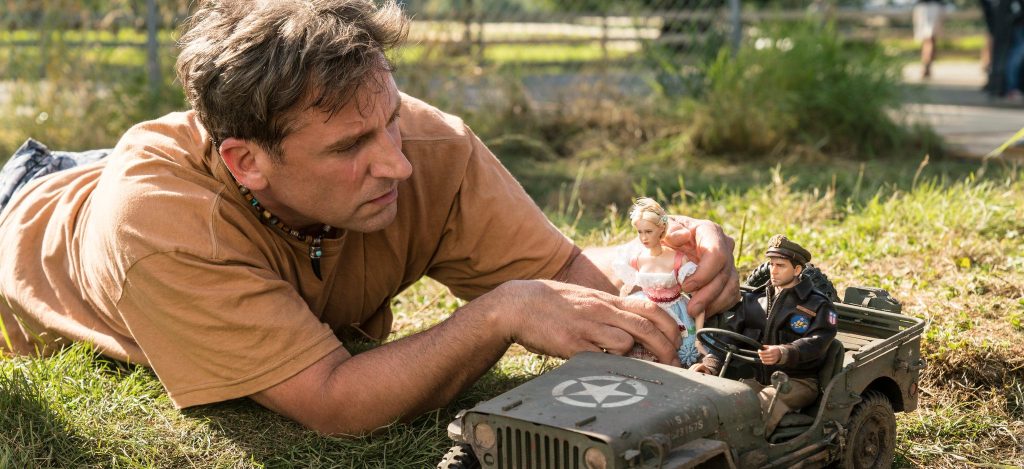
Through this world, which he named Marwencol, Hogancamp found a way to unleash his pent-up frustrations, anger, and creativity through the pursuit of art and photography. His make-believe world was inspired thematically to reflect the horrors of war, but it also reflected the horrors of his psyche. In a 2015 interview with the Guardian, the photographer discussed his intentions behind constructing the fabled and magical world. “Marwencol was solely made up so I could kill those five guys,” he said. “I had no way to do it in real life. I played it over in my head. I’d get caught. I’d go to prison. I’d get the chair. The first time I killed all five of them, I felt a little bit better. That violent hatred and anger subsided a little.”
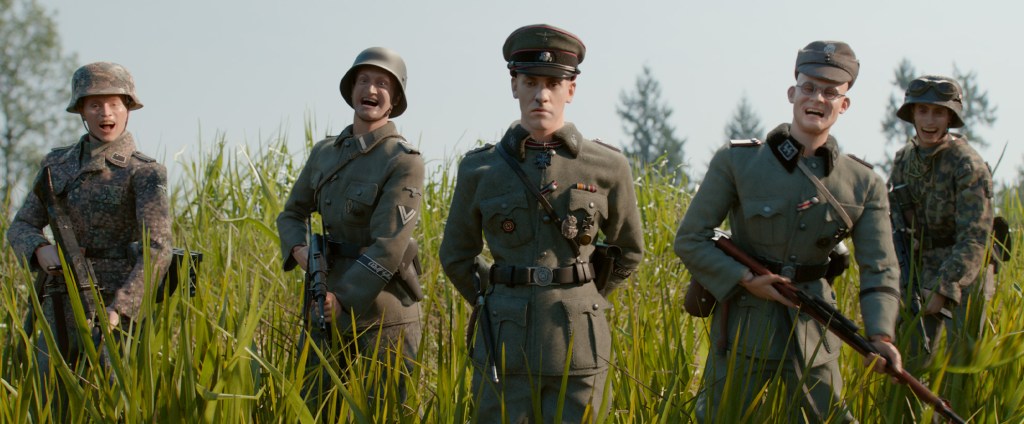
When Hogancamp was asked how many times he’d killed those men in his imagination, he replied – “Oh, over and over. For 12 years now. I’ve killed them every which way. I’ve killed them in ways Satan himself hasn’t even thought of.” Strangely, he held a pragmatic view of his tragedy. “My brain is protecting me by not allowing me to remember,” he said when talking about his loss of memory. He didn’t remember his ex-wife, who left him because of his problems with alcoholism. His astonishing journey through difficult waters may be unique, but it also highlights the resilience that has been built into him. Instead of holding a shattered and broken view of things, he considered the result more fruitful than what it took to get there. “I needed help from God,” he said. “And so he sent five horsemen.”
How Welcome to Marwen Dramatizes Mark’s Trauma
Several characters within ‘Welcome to Marwen’ are also based on people Hogancamp met through his journey into photography and Marwencol. The neighbor who moves in next door, Nicol, was based on his real-life neighbor, Colleen Vargo, who was renamed for the movie. Before his grave injury and the subsequent memory loss, Hogancamp was a talented artist who could draw. But after the damage that was done to his brain, he lost the ability. The photographer didn’t take his punishment face-down, though, because, like Mark in the movie, he testified against his assaulters and fought to have them punished.
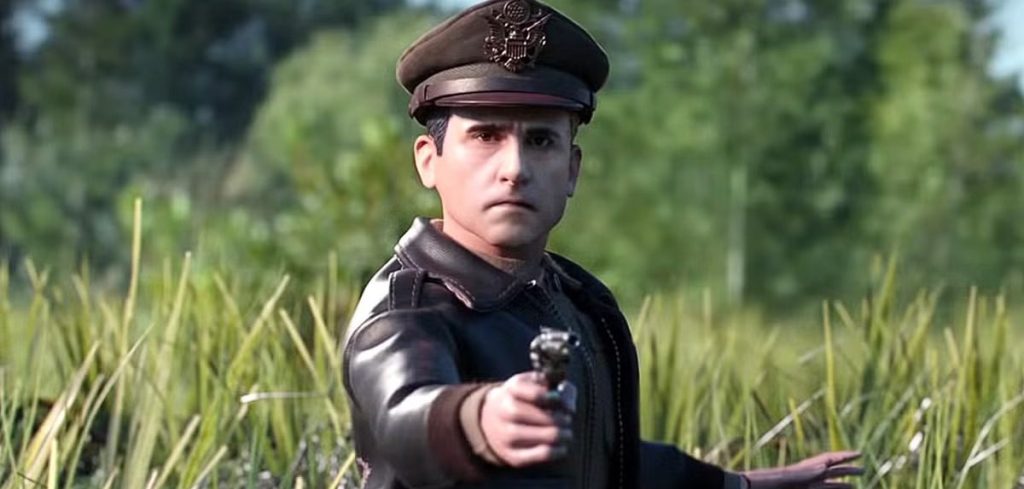
When Robert Zemeckis took on the challenge to direct ‘Welcome to Marwen,’ he wanted to ensure that Hogancamp’s recovery efforts were highlighted above all else. “Well, what I loved about the story, well, I thought the story was a hopeful story,” he said. “And I thought it was the triumph of the human spirit and the healing power of art. But what I thought was also something that only a movie could do, and a movie could do it in the most perfect way, was to be able to tell the story between Mark’s photographs. Bring this story that was going on in his mind’s eye alive between the photos. And I thought that’s something that you can only really do in a movie.”
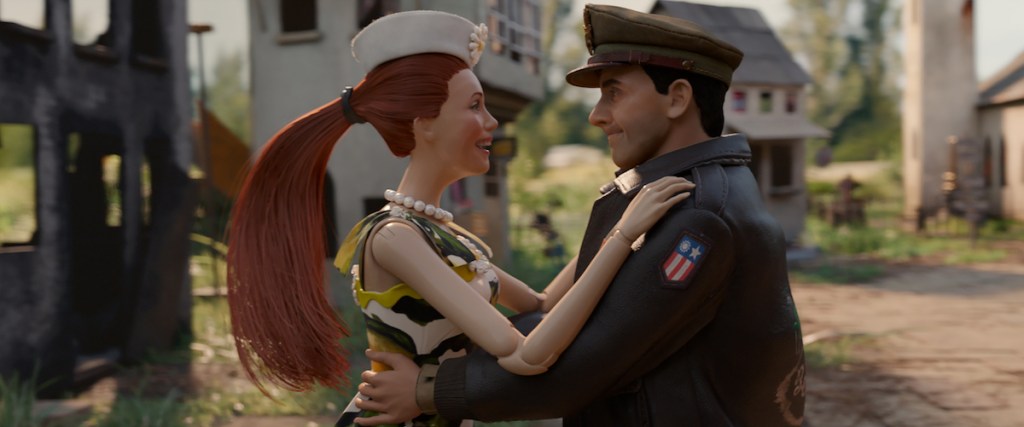
While Hogancamp brought the world of Marwencol to life through his photography, Zemeckis felt that he could portray the imagination of the photographer’s mind through the use of CGI. Each of the dolls is an alter ego of people close to Mark; as such, their fanciful lives, full of action, adventure, camaraderie, and bravery were more dynamically achievable through a blend of live-action and animation footage. This change offers more dramatic potential and heightens the stakes of the central character’s mental struggles. As Mark faces his PTSD, the film pivots between his internal imagination and the real world where he is suffering a panic attack.
So, while ‘Welcome to Marwen’ enhances the life of Mark Hogancamp by generalizing his personal relationships with people and elevating the world of Marwencol through animation, his actual life story is astonishing in its own right. The film may round the corners and soften some edges, like the time he spent in recovery at the rehabilitation center or his battles with alcoholism, but it still manages to be an accurate chronicle of the man’s talents, struggles, and fortitude.
Read more: Welcome to Marwen: Is Avalanche Roadhouse a Real Restaurant and Bar?

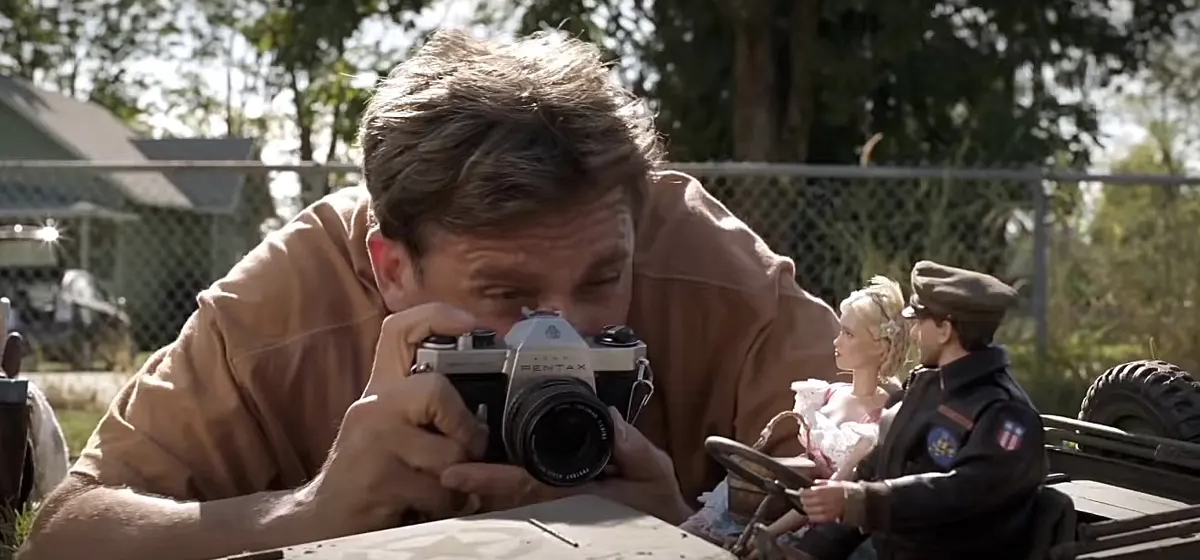
You must be logged in to post a comment.